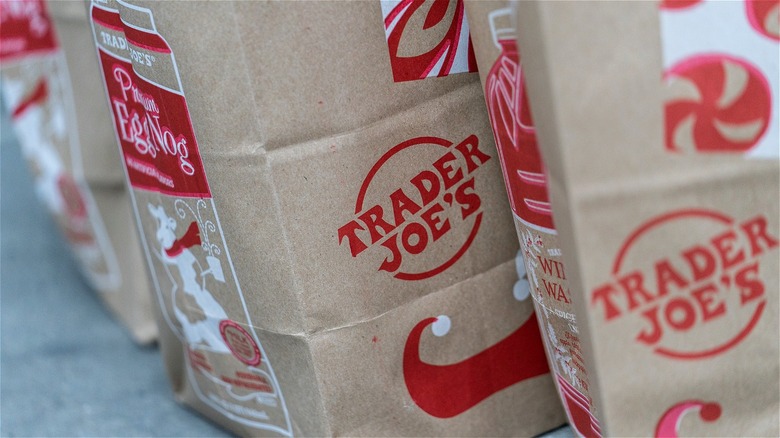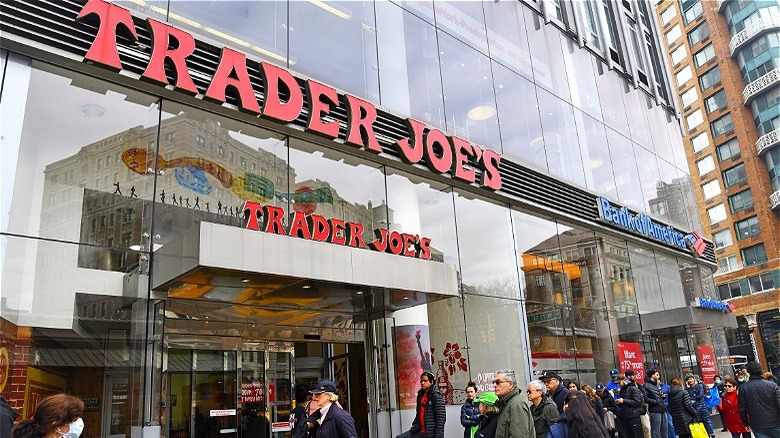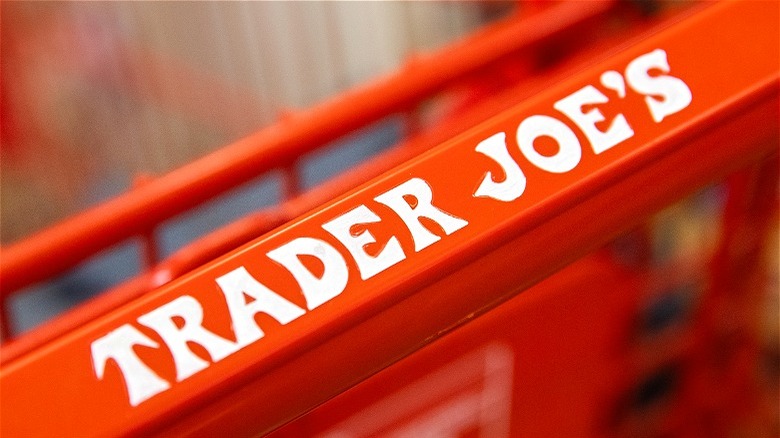It Actually Costs More To Live Near A Trader Joe's
Grocery shopping is one of those necessary adult activities that can quickly become tiresome and mundane. But Americans seeking a change of pace may turn to Trader Joe's to quelch any feelings of complacency. In 2018 and 2019, Trader Joe's took the top spot in DunnHumby's Retailer Preference Index over competitors such as Costco and Aldi due to the brand's commitment to value.
The niche grocery store has consistently maintained customer loyalty through an immense, often-changing range of private-label products (per Supermarket News). With no coupon availability or member rewards program, Trader Joe's keeps prices low by buying products in bulk directly from manufacturers and constantly looking at product performance to make way for new items.
According to CNBC, Trader Joe's has garnered a cult-like following by creating a one-of-a-kind shopping experience for the everyday consumer. Shoppers not only appreciate the creative package labeling and fun in-store decor, but they also appreciate that the limited product assortment makes grocery shopping easier. While the brand's in-store offerings often come and go with the seasons, dedicated shoppers remain eager to rave about their favorite Trader Joe's products. And though the company is dedicated to offering you the best value for your money, recent research suggests you may need a lot more dough if you'd like to have the convenience of the small-scale grocer within a few block radius.
The link between high housing costs and Trader Joe's
People shopping for a deal can make the argument that there are plenty of ways to save money by shopping at Trader Joe's. But living near the small-scale grocer is a different story. First off, when it comes to the American housing market, even though prices are slightly declining, the overall cost of buying a home in 2022 is still considerably high. The New York Times reports that the average cost of a house in the United States is currently $425,000 with a 10% down payment. However, in Attom Data Solutions' recent research detailing housing profits for buyers and investors in relation to grocery store proximity, Trader Joe's was ranked number one in relation to an increase of home value.
GoBankingRates showcases how Attom's looked at markers such as average housing value and seller motivation for homes in close proximity to either Aldi, Whole Foods, or Trader Joe's. Based on the findings from Attom Data Solutions, the average price of a house sharing a zipcode with Trader Joe's is a whopping $987,923. Even though Aldi came out on top for home appreciation and return on investment for renovation, the fact that living near Trader Joe's may cost you a million dollars may seem odd considering the small-scale grocer lives and breathes off its commitment to value. These findings have also led others to blame gentrification, but is that the only excuse for these outlandish prices?
What came first: High-priced housing or Trader Joe's?
Attom Data Solutions' research wasn't the first deep dive into the housing market in relation to grocery stores. In 2019, Attom Data Solutions and Zillow conducted the same level of research and found that homes in close distance to Trader Joe's to appreciate more when compared to those in close proximity to Aldi and Whole Foods. This has led to what Apartment Therapy calls the "Trader Joe's effect." But is Trader Joe's purposely choosing neighborhoods that have residents with higher incomes?
Steven Gottlieb, an agent at Warburg Realty, told Yahoo that he believes an upscale grocer cannot be solely responsible for the price hikes seen in a location's neighborhood. Rather, consumers who have the money often choose to live near their favorite shops. They can afford to buy a home in a city where there are several retail options and accommodations.
Yet, according to Bloomberg, in a city where gentrification is slowly taking over, once an upscale grocer makes its way into the neighborhood, prices increase more than they would with a potential fitness center or bookstore. Zillow chief economist Stan Humphries told Bloomberg, "the stores have become an amenity in their own right–a signal to the home buying public that the neighborhood they're located in is desirable, perhaps up-and-coming and definitely improving." Whether this relies solely on the shoulders of Trader Joe's is unfounded and continues to remain a hot topic of debate.


